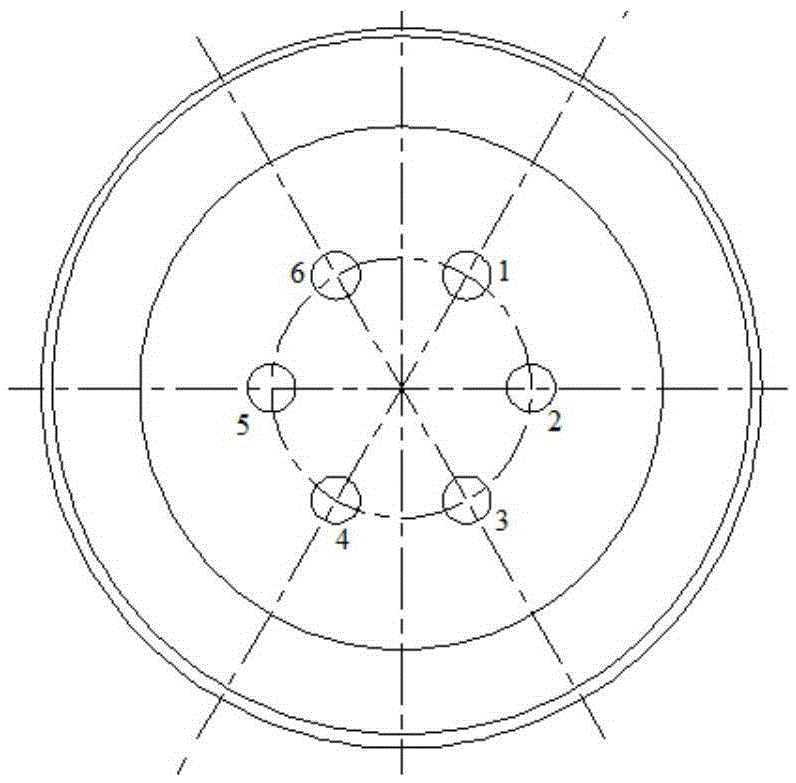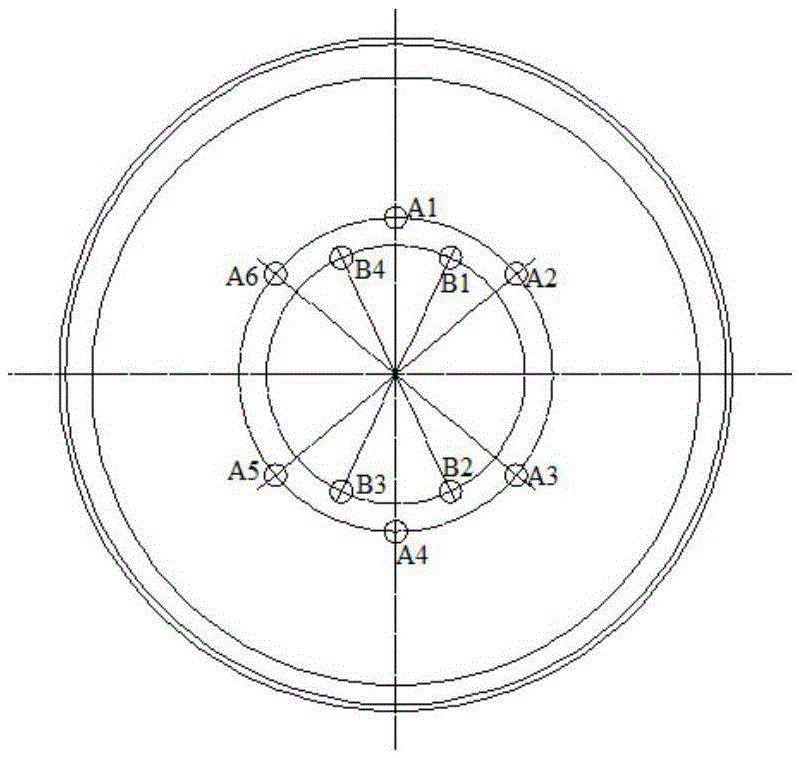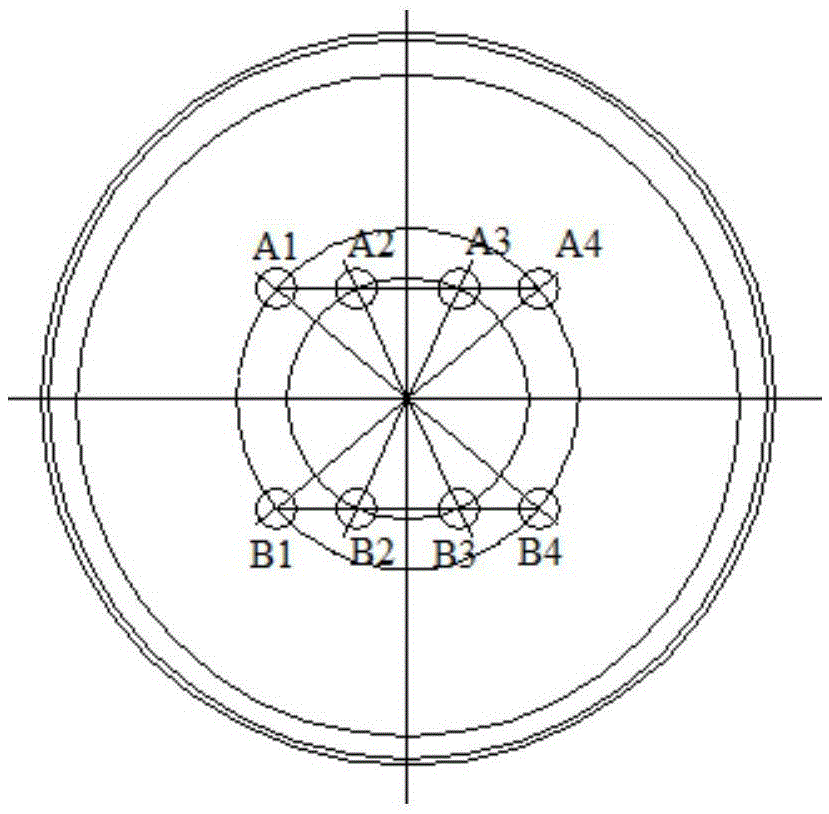Converter bottom blowing element air-supply method conducting grouping, timing and rotary switching according to intensity
A technology of converter bottom blowing and intensity, which is applied in the field of timing, rotation and switching of gas supply, converter bottom blowing components grouped according to strength, can solve the problems of bottom blowing gas stirring kinetic energy short circuit, weakening the effect of mass transfer between slag and molten steel, etc., to increase Effective contact area and mass transfer coefficient, improvement of dead zone flow field, and good economic and technical indicators
- Summary
- Abstract
- Description
- Claims
- Application Information
AI Technical Summary
Problems solved by technology
Method used
Image
Examples
Embodiment 1
[0034] Such as figure 1 The bottom blowing element arrangement structure of a traditional compound blowing converter shown in the figure has six bottom blowing elements arranged on the bottom of the furnace, and the six bottom blowing elements are symmetrically distributed on both sides of the tapping side and distributed in a concentric circle. Divide the six bottom blowing components into two groups, among which 1, 3, and 5 odd groups form a group, and the remaining even groups form a group.
[0035] After the blowing starts, according to the actual smelting situation, the odd group can be set as the strong bottom blowing group, and the even group can be set as the weak bottom blowing group. , the bottom blowing intensity can be adjusted, the even group becomes a strong bottom blowing group, and the odd group becomes a weak bottom blowing group. During the whole smelting process, the distribution of bottom blowing intensity can be adjusted in real time according to the slag...
Embodiment 2
[0038] Such as figure 2 The arrangement structure of bottom blowing elements of a traditional compound blowing converter is shown. There are 10 bottom blowing elements arranged at the bottom of the furnace. The 10 bottom blowing elements are symmetrically distributed on both sides of the tapping side, but distributed in two concentric round. Divide the 10 bottom blowing components into two groups, among which group A is distributed on the outer circle, and group B is distributed on the inner circle. Group A has 6 bottom blowing components, and group B has 4 bottom blowing components. At the same time, set the odd-numbered bottom-blowing components A1, A3, and A5 of group A as strong bottom-blowing groups, and the even-numbered bottom-blowing components as weak bottom-blowing groups. Similarly, set the 4 bottom-blowing components of group B in the same way. Moreover, group A can also be uniformly set as a strong bottom blowing group, and group B can be uniformly set as a weak...
Embodiment 3
[0042] Such as image 3 The bottom-blowing components of a traditional compound-blowing converter shown are unconventional arrangement structure. There are 2 rows of 8 bottom-blowing components arranged on the bottom of the furnace, and 2 rows of 8 bottom-blowing components are symmetrically distributed on both sides of the tapping side. Divide the 8 bottom blowing components into two groups, among which the group A is distributed on the upper side, and the group B is distributed on the lower side. Group A has 4 bottom blowing components, and group B has 4 bottom blowing components. At the same time, set the odd-numbered bottom-blowing components A1 and A3 of Group A as strong bottom-blowing groups, and the even-numbered bottom-blowing components as weak bottom-blowing groups. Similarly, set the 4 bottom-blowing components of Group B in the same way. Moreover, group A can also be uniformly set as a strong bottom blowing group, and group B can be uniformly set as a weak bottom ...
PUM
 Login to View More
Login to View More Abstract
Description
Claims
Application Information
 Login to View More
Login to View More - R&D
- Intellectual Property
- Life Sciences
- Materials
- Tech Scout
- Unparalleled Data Quality
- Higher Quality Content
- 60% Fewer Hallucinations
Browse by: Latest US Patents, China's latest patents, Technical Efficacy Thesaurus, Application Domain, Technology Topic, Popular Technical Reports.
© 2025 PatSnap. All rights reserved.Legal|Privacy policy|Modern Slavery Act Transparency Statement|Sitemap|About US| Contact US: help@patsnap.com



